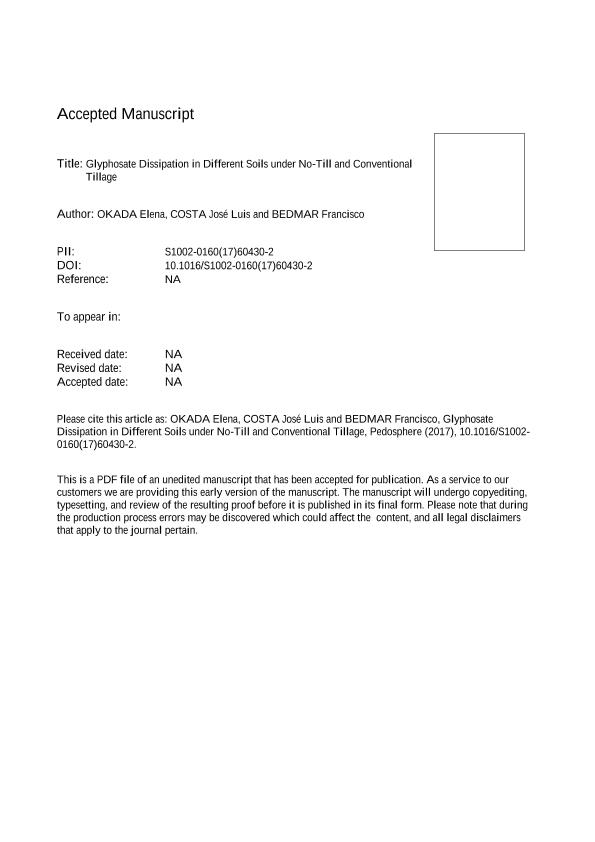Artículo
Glyphosate Dissipation in Different Soils under No-Till and Conventional Tillage
Fecha de publicación:
05/08/2017
Editorial:
Science Press
Revista:
Pedosphere
ISSN:
1002-0160
Idioma:
Inglés
Tipo de recurso:
Artículo publicado
Clasificación temática:
Resumen
Glyphosate is the most used herbicide in Argentina, accounting for 62% of the commercialized pesticides in the market. It is used as a weed controller in no-till systems, and it is also applied in various genetically modified crops (e.g. soybean, corn, cotton). Though it has a high solubility in water, it tends to adsorb and accumulate in agricultural soils. The main objectives of this work were to compare the dissipation of glyphosate and the accumulation of its metabolite aminomethylphosphonic acid (AMPA) over time in three soils from agricultural areas of Argentina, under long-term management of no-till (NT) and conventional tillage (CT) practices. Forty percent of the applied glyphosate was degraded within the first three days in all soils, indicating a fast initial dissipation rate. However, the dissipation rate considerably decreased over time and the degradation kinetics followed a two-compartment kinetic model. No differences were found between tillage practices. Dissipation was not related to the microbial activity measured as soil respiration. The fast decrease in the concentration of glyphosate at the beginning of the dissipation study was not reflected in an increase on the concentration of AMPA. The estimated half-lives for glyphosate ranged between 9 and 38 days. However, glyphosate bioavailability decreases over time as it is strongly adsorbed to the soil matrix. This increases its residence time which may lead to its accumulation in agricultural soils.
Palabras clave:
Dissipation
,
Pesticide
,
Two-Compartment Kinetic Model
Archivos asociados
Licencia
Identificadores
Colecciones
Articulos(CCT - MAR DEL PLATA)
Articulos de CTRO.CIENTIFICO TECNOL.CONICET - MAR DEL PLATA
Articulos de CTRO.CIENTIFICO TECNOL.CONICET - MAR DEL PLATA
Citación
Okada, Elena; Costa, Jose Luis; Bedmar, Francisco; Glyphosate Dissipation in Different Soils under No-Till and Conventional Tillage; Science Press; Pedosphere; 5-8-2017; 1-19
Compartir
Altmétricas




